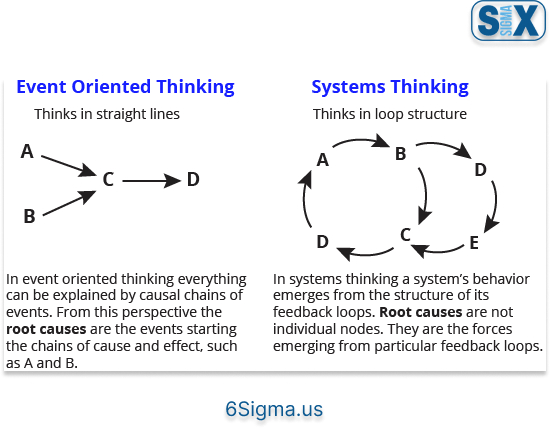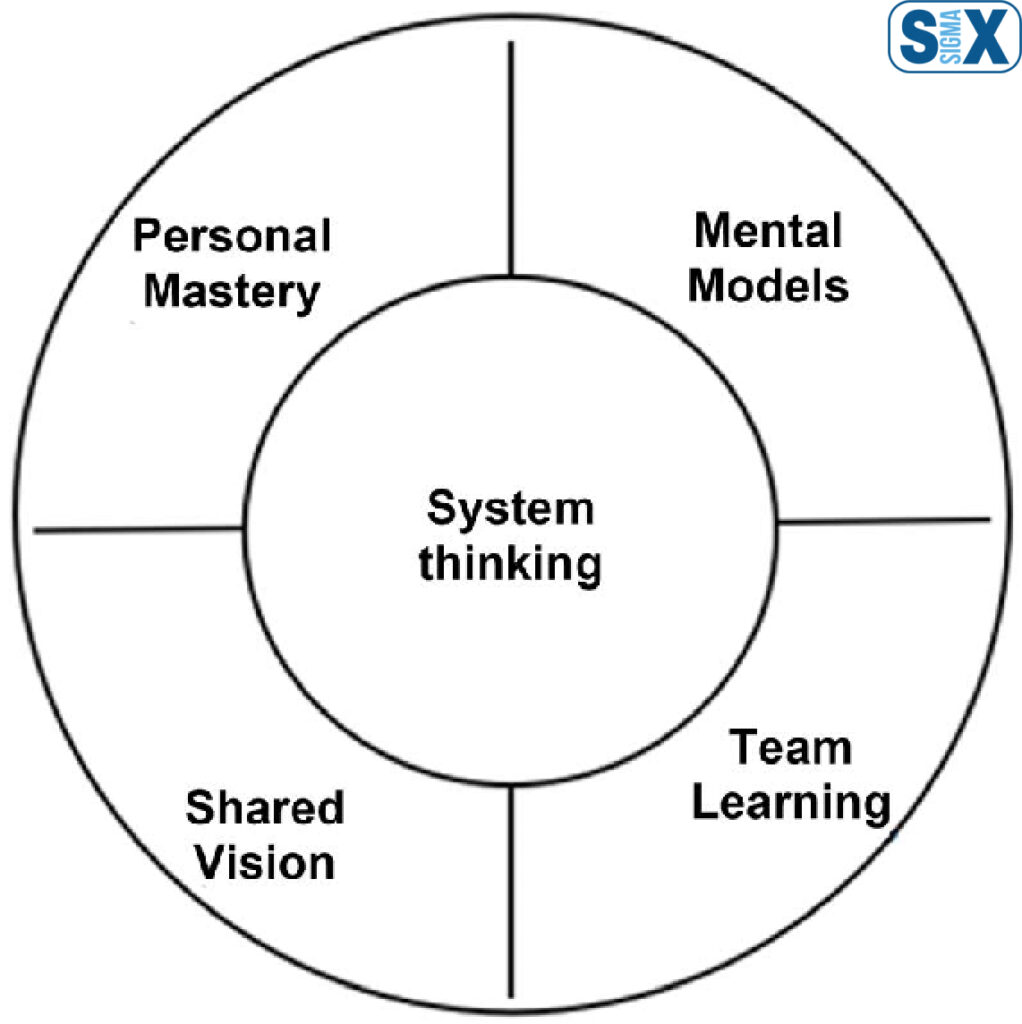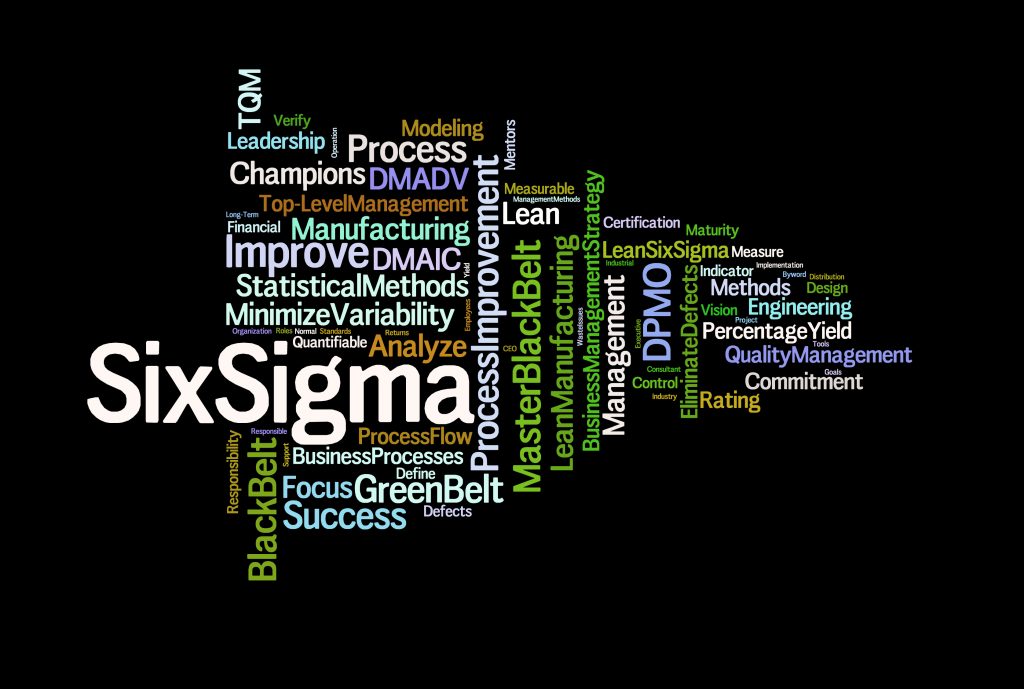Systems Thinking in Business. How Does it Improve Workplaces?
Organizations encounter dynamic problems as the business landscape becomes more complicated due to causes such as globalization, technology disruptions, climate change, and other dynamic issues.
The most successful businesses in the world have to negotiate complex webs of interwoven connections with their partners, customers, rivals, and staff.
Linear, reductionist thinking falls short in handling such multidimensional problems. A different approach is needed – one that views business as an integrated system and takes a big-picture perspective.
Systems thinking offers leaders a powerful mindset and set of tools for managing modern organizational complexity.
By understanding organizations as complex adaptive systems, leaders can focus attention on critical connections and inform strategic plans that ripple through integrated operations.
Mapping techniques reveal the bigger picture, including information flows, causal relationships, and feedback loops driving systemic behaviors.
What is Systems Thinking in Business?
The systems thinking in business approach examines how parts interrelate and combine into complex business networks. Rather than isolating issues, it focuses attention on critical interconnections.
How do workflows, teams, and departments relate? How do choices propagate through integrated systems?
Instead of linear cause and effect, systems thinking recognizes circular causality, feedback loops, and unintended consequences.
Though new situations may emerge from parts interacting, the system itself evolves purposefully through shared information.
By mapping financial capital flows, supply chains, and client engagement processes leaders gain an oriented perspective for organizational learning and adaptation.
Systems thinking requires crossing departmental silos to formulate coherent solutions scaling up and down integrated operations.
With holistic understanding, adjustments targeted at leverage points gracefully ripple through organizations.
For example, information system upgrades may simultaneously increase manufacturing flexibility, enable innovative data analytics, and improve customer experience.
The synergistic result multiplies the effect of isolated changes. While complex, systems thinking cultivates the insight and organizational alignment needed to drive systemic transformation.
Key Principles of Systems Thinking in Business
Systems thinking examines the circular interconnections binding enterprise functions into an integrated whole.
It reveals the dynamic complexity arising from causal feedback loops and emergent behaviors that determine organizational performance over time.
Leaders must grasp these core principles for effectively navigating entanglements spanning strategy, operations, and sustainability.
Interconnections between system components create complex adaptive systems
Businesses comprise networks of multidirectional relationships connecting vision, personnel, resources, and activities across departments. More than isolated silos, organizations operate as ecosystems where the vitality of each element depends on the health of supporting and competing units.
Understanding these dynamic interdependencies helps leaders design integrated, resilient organizations.
Adaptivity means systems self-organize as new situations emerge from parts interacting. Leaders provide overriding vision while granting autonomy for context-specific decisions at points of application.
This distributed capability allows complex adaptive systems to dynamically optimize performance amidst uncertainty.
Feedback loops drive systemic behavior over time
While leaders initiate change, internal feedback loops sustain transformation across organizations. Reinvestment of financial capital and retraining programs are common examples.
However, unforeseen reactions can also disrupt alignment. Analyzing feedback dynamics over time provides leading indicators for emerging issues and innovations alike.
Blockages or delays in inflows create ripples that can dampen performance.
Using Systems Thinking in Organizations
Systems thinking methodologies build stakeholder alignment, inform leadership decisions, and smooth transformation efforts.
Collaborative modeling fosters mutual understanding while visual maps empower leaders to consider multidimensional impacts and interdependencies.
Understanding enterprise adaptivity facilitates change initiatives by coordinating responses across integrated units.
Aids collaboration through group modeling sessions
Systems thinking fosters participation revealing diverse perceptions and mental models. Collaborative modeling sessions synthesize knowledge, surface hidden connections critical for constructive solutions, and prevent narrow assumptions from incorrectly bounding complex contexts.
Multidisciplinary participation keeps decision-making grounded in operational realities while increasing buy-in.
Enables leadership to take a holistic perspective
While responsibilities constrain perspectives, systems thinking allows leaders to consider the whole beyond departmental divisions. How do functions interrelate? Where might silos misalign with organizational strategy?
Holistic understanding, targeting operational optimization over narrow metrics, balances quality, efficiency, and sustainability.
Supports change management and adaptation
Systems thinking is particularly valuable when adapting organizations to pressing environmental shifts or reimagining competitive positioning.
Change initiatives flounder without concurrently updating interdependent yet isolated components.
Modeling exercises guide multifaceted transitions coordinating structures, skills, and culture within the systemic context – increasing success rates.
Mapping Systems to Gain Insights
Confusion and uncoordinated decisions characterize attempts at managing complexity absent orientation tools.
Systems thinking provides advanced mapping methodologies revealing the terrain hidden behind veils of turbulence.
Integrating qualitative insights and quantitative data, these models distill underlying dynamics into consumable formats promoting stakeholder literacy.
Descriptive visualizations build mental models supporting leader cognition while analytic simulations forecast scenarios facilitating anticipatory responses.
Mapping catalyzes aha moments as endless variables coalesce into enlivened pictures of reality. Essential interconnections become visible across previously obscured divisions.
By externalizing mental models in causal loop diagrams, teams synthesize disjointed puzzles into unified wholes powering generative dialogues and pointed problem solving.
Systems thinking hands leaders compass, giving direction amidst uncertainty’s churning seas.
Visual mapping reveals connections and information flows
System mappings provide orientations necessary for understanding complexity. Diagrams elegantly distill networks of circular causality down to core dynamics rendered intuitively comprehensible through visual abstraction.
Mappers utilize a common syntax highlighting delays, reinforcing and balancing loops, and information conduits to capture systemic contexts and mental models in shared representations.
These living documents precipitate consensus while opening discussion of alternative perspectives. Rich pictures effectively boundary complex problems and elucidate multifaceted solutions by externalizing assumptions.
Clarity in institutional dynamics and decision-making pathways helps leaders purposefully navigate uncertainty.
Causal loop diagrams show interdependencies
Causal loop diagrams reveal interdependencies and trace cascading effects of isolated decisions throughout systems. By projecting the ripples of change leaders avoid unintentional outcomes and coordinate appropriate responses.
Loops make tangible hidden connections between enterprise strategy, employee experience, customer service, and financial sustainability.
No function operates in isolation but rather mutual influence ties the fate of the organization together.
Quantitative system dynamics models using data and analytics
While qualitative models appropriately bound complexity, quantitative system dynamics models inject operational data into causal diagrams measuring future trajectories.
Sophisticated simulations guide interactive experimentation answering “what if” questions about stochastic system performance.
Scenario testing interventions in virtual environments build confidence around approaching real-world transformations.
Applying Systems Thinking in Business for Innovation and Sustainability
Business environments reward adaptation and punish fragility. Systems thinking offers leaders tools for designing resilient, regenerative organizations amidst uncertainty and scarce resources.
Taking a big-picture perspective reveals inefficiencies and barriers to innovation across fragmented functions. Understanding enterprises as ecosystems highlights multidirectional stakeholder interdependencies.
Desired future states emerge from rewiring broken connections and strengthening synergistic relationships.
Mapping exercises uncover leverage points – small changes with cascading impacts. With insight into systemic contexts, leaders can target high-influence interventions realizing exponential transformation.
A little change goes a long way when backed by integral systems wisdom. The following explores practical applications of systems thinking compounding growth through circular economics and distributed innovation while securing competitive futures.
Fosters emergent solutions to chronic problems
Linear thinking traps organizations in recurring dysfunctional patterns. Systems modeling excavates the underlying structures perpetuating such pathologies. This clarity precipitates breakthrough redesigns sidestepping historical limitations.
Fresh perspectives reveal novel alternatives hidden behind assumptions and status quo bias. Systems thinking empowers leaders to rewrite stagnant stories, transforming chronic headaches into catalysts for evolutionary growth.
Considers multiple stakeholder needs
Organizations sustain success by satisfying co-evolving needs despite environmental turbulence. Systems mapping incorporates diverse stakeholder worldviews into dynamic pictures of complex contexts.
Modeling multiple perspectives prevents narrow assumptions causing misguided decisions which eventually undermine performance for everyone. Integrating broader experiences grounds understanding in updated realities.
Designs integrated systems achieving synergy
While specialized functions drive peak efficiency in silos, higher-order opportunities arise integrating across boundaries. Systems appraisals spotlight excess buffer stockpiles awaiting transfer and gaps indicating missing coordination.
This holism promotes establishing shared platforms, reusing waste streams, consolidating channels, and tuning operations for synergistic outcomes. Aligned components compound competitive advantage.
Promotes circularity and efficiency
Industrial economics assumes limitless inputs and carelessly externalizes waste. Systems thinking applies principles of ecology to business design circumventing linear take-make-dispose models.
Circular production cycles resources internally while enabling regenerative value creation. For example, recycled materials and remanufactured products create value from reusable waste. Overall this looping dramatically improves sustainability and resilience.
Systems Thinking in Business for Strategic Decision-Making
Business strategy balances complex trade-offs between growth, sustainability, capability development, risk management, and maintaining organizational identity.
Demanding dynamism strains linear thinking while siloed interests obscure interdependencies. Leaders require integrated wisdom guiding decisions compounding prosperity amidst uncertainty.
Systems thinking revolutionizes strategy by revealing causality, taking systemic perspectives, grounding choices in evidence, and managing collective performance.
Reveals causality and mental models
Every strategic action spurs cascading reactions. Systems thinking illuminates multi-step causality chains triggering unintended consequences across operational divides.
Similarly, identifying diverse mental models housed across stakeholders pools broader intelligence while preventing blind spots from narrow assumptions. Integrating multiple perspectives grounds decisions.
Informs problem-solving with a systemic perspective
Point solutions routinely generate downstream issues as they ripple through circular causality webs. Systems thinking grasps problem spaces holistically – not piecemeal.
This context explains why issues persist and how interventions propagate through systems. Holism evokes exponentially better solutions and reveals where to strategically intervene.
Supports evidence-based leadership choices
Data absent theory misleads while theory absent data speculates. Systems thinking leverages quantitative modeling informed by qualitative mappings of complex spaces. Intertwining perspectives grounds decisions in multidimensional assessments of past trajectories, present states, and probable futures. Wise choices emerge.
Enables performance management
Corporate dashboards traditionally monitor narrow metrics failing to stimulate excellence. Systems thinking interrelates strategic goals, production processes, and sustainability outcomes.
This holism manages systems, not silos, empowering leaders to balance key trade-offs through contextualized decision making maximizing collective performance.
Benefits of Systems Thinking in Business
Systems thinking empowers leaders to thrive amidst escalating complexity, uncertainty, and change. The holistic perspective clarifies opaque contexts while revealing synergistic opportunities.
Understanding enterprises as networks of circular causality connects strategic planning to operational execution. Mapping methodologies build stakeholder alignment enabling unified action.
Ultimately systems thinking drives sustainability through widespread innovation and adaptation.
Holistic understanding of complex contexts
By revealing the whole system thinking connects the dots between isolated challenges providing meaning amidst uncertainty. Comprehensive visual maps substitute disorientation with actionable orientations.
Broad patterns emerge from information flows now rendered transparently. Integrated theories of enterprise operation and evolution inform strategy and decision-making with contextual wisdom.
Shared leadership and collaboration
Systems thinking functions as a boundary object facilitating common understanding between disconnected contributors.
Modeling complex challenges collectively builds trust and ownership while synthesizing siloed knowledge into wisdom greater than isolated insights.
Further, exposing mental models opens strategy formulation to broader evidence and diverse worldviews preventing narrow assumptions.
Increased adaptability to external change
Seeing interconnectedness highlights hidden exposure points and traces cascading impacts of change throughout organizations.
Holistic monitoring allows for anticipating emerging threats and opportunities and then skillfully rebalancing integrated operations.
Mapping exercises develop organizational agility by rehearsing responses to imagined scenarios and tuning structures for resilience.
Sustainable growth through innovation with Systems Thinking in Business
Systems thinking reveals barriers and leverage points for introducing systemic innovations compounding enterprise longevity.
For example, designing circular production systems or data analytics capturing wasted capacity for new monetization opportunities.
Testing value-creating scenarios on computational models grows confidence for investigated transformations centered on lasting prosperity.
Regularly updating visual maps offers orienting documents guiding change. Quantitative models inject scenario planning into long-term visioning.
Implementing Systems Thinking in Organizations

Systems thinking rapidly spreads beyond isolated teams permeating organizational cultures through adjusting supportive structures, developing leader capabilities, and embedding practices sustaining changes.
Although catalyzed by value-realizing pilot projects, transforming enterprises requires organizational realignment and growth in understanding.
Change propagates as positive loops link small wins to further investment and proficiency building until system thinking becomes the default mode.
Requires shifts in organizational structures
Breaking down silos that obscure system interdependencies call for structural modifications removing barriers to information flows and collaboration.
New coordination roles, cross-functional processes, and reconfigured departments enhance boundary spanning. However, modifications must balance efficiencies of specialization against integration needs.
Ongoing development of systems skills and thinking
While executives sponsor initial training, growing internal expertise propels penetration. Skilled practitioners socialize tools during modeling sessions with colleagues.
Over time groups integrate systems thinking into everyday problem solving and strategic planning. Gradually mental models shift from narrow reductionism toward holistic perspectives revealing new markets, capabilities, and partnerships.
Embedded practices for systemic planning and evaluation
Routinizing systems thinking into business practices cements gains realizing compounding returns. Integrating systems analysis into market research, product development, risk assessments, and strategy formulation leverages interdependence insights.
SixSigma.us offers both Live Virtual classes as well as Online Self-Paced training. Most option includes access to the same great Master Black Belt instructors that teach our World Class in-person sessions. Sign-up today!
Virtual Classroom Training Programs Self-Paced Online Training Programs









